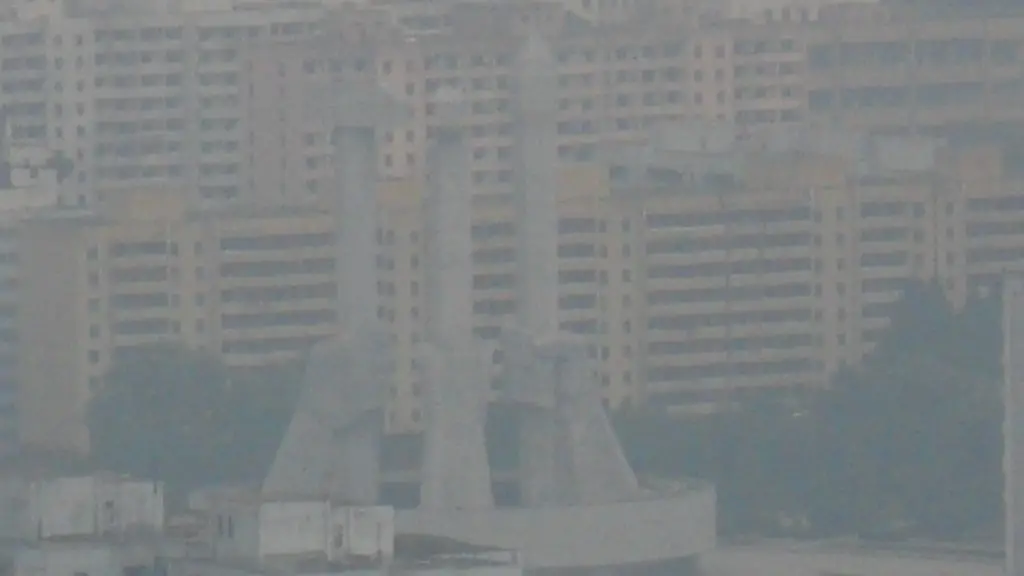How Close To War With North Korea
North Korea, officially known as the Democratic People’s Republic of Korea (DPRK), has been facing international sanctions and intense criticism for its nuclear weapons and ballistic missile program since 2006. The country, which is the most isolated nation in the world, has been labeled a “rogue state” by the United Nations due to its repeated violations of international law. North Korea has conducted multiple nuclear tests, and continues to threaten its neighbors and the world with its nuclear ambitions. North Korea’s nuclear program has been accompanied by an Increase in tensions between the US and North Korea, and recently Beijing and Pyongyang, as the United Nations and a number of Western countries push for a resolution to the situation.
The US and North Korea have been in a state of increasing confrontation for decades. In 2018, the US President has issued a number of warnings to North Korea, even going so far as to threaten a “total destruction” of the country if it does not abandon its nuclear weapons program. North Korea responded by threatening to launch nuclear missiles at US cities and US allies in the region. In that same year, President Trump met with North Korean leader Kim Jong-un for two historic summits in an attempt to bring peace to the region, but the two sides still remain deadlocked in an escalating nuclear stand-off.
The world has never been closer to a war with North Korea. North Korea has continued to carry out missile launches and nuclear tests, and in July 2017 it conducted its most powerful intercontinental ballistic missile test to date. It is estimated that North Korea now has the capability to launch missiles that can reach the United States and its allies. The US and South Korea also conducted large-scale joint military exercises in the region in August 2017, further increasing tensions between the two countries.
Experts estimate that North Korea now possesses at least 30 nuclear warheads, which could have the capability of reaching US allies in the region and even the US mainland. In the event of war, North Korea is believed to be able to use its ballistic missiles to quickly and effectively deliver weapons of mass destruction to its targets.
Despite the tensions, US and North Korean officials have been holding talks on ways to de-escalate the situation. The US has maintained an official policy of strategic patience, and has indicated a willingness to engage in dialogue and take steps to cool down tensions.
What Would War Look Like?
A war between the US and North Korea is likely to be short and destructive, but would also have severe global implications. In the event of a war, North Korea could easily launch a nuclear strike against the US, Japan and South Korea, as well as any other nations in the region. This would cause massive destruction and widespread loss of life, as well as a devastating economic impact.
If war were to occur, we can also expect North Korea to mobilize and prepare its massive army of millions of troops. North Korea is amongst the most militarized states in the world, and has formidable armaments to support ground forces. Additionally, North Korea has surface-to-air missiles, which could potentially shoot down US aircraft, as well as advanced cyberwarfare capabilities which could cripple US computers, networks and military systems.
Risks and Consequences
A war between the US and North Korea would be catastrophic for the region, leaving millions of people dead and displaced, and crippling the global economy for years to come. There are also risks of a nuclear exchange, with South Korea and Japan particularly at risk in the event of a US-North Korea conflict. South Korea’s capital, Seoul, is within artillery range of North Korea, and could be the target of North Korean nuclear attacks if war were to occur.
A war between the US and North Korea could also have serious geopolitical consequences, as it could draw in other countries. China has indicated that it would intervene to protect North Korea if the US were to launch a preemptive strike, and Russia has also expressed its support for Pyongyang. This could potentially lead to an all-out regional war.
International Response
The international community has taken steps to address the increasing tensions between North Korea and the US. The United Nations Security Council has imposed stiff sanctions on North Korea, and implemented its own measures to force the country to abide by international law. In addition, the US and its allies have sought to engage North Korea diplomatically in the hopes of reaching some kind of resolution to the conflict.
The US and South Korean governments have also increased their military presence in the region. South Korea has deployed additional troops and increased monitoring of North Korean military activities, while the US has sent an additional 58,000 troops to the region. Both sides have also engaged in non-military tactics, such as making attempts to mitigate tensions by releasing statements through international channels.
What Lies Ahead?
The US and North Korean governments have yet to reach a breakthrough in their negotiations, and experts fear that a war between the two countries could be imminent. However, it is clear that the US and its allies are making attempts to de-escalate the situation. In the coming months, the international community should focus its efforts on de-escalating tensions and reaching a diplomatic resolution to the crisis.
Evaluating The Chances of Conflict
President Trump has made it clear that the US will not tolerate North Korea’s continued pursuit of nuclear weapons, and prepared to take a hard line stance if need be. The US is also facing pressure from its allies to take a strong stance against North Korea, and has made it a priority to protect its citizens and its allies from the potential threat of North Korean missiles. All of these factors mean that the chances of conflict between the US and North Korea remain high.
At the same time, there are some positive signs that a peaceful solution might be possible. North Korea has expressed a willingness to enter into talks with the US, and there have been reports that North Korea is willing to de-nuclearize if the US agrees to meet certain conditions. Additionally, the US and its allies have been taking steps to de-escalate tensions through diplomatic channels, and Trump has recently expressed an interest in meeting with Kim Jong-un for a third summit.
Analyzing The Strategic Robustness Of US Policy
The US policy status quo towards North Korea remains in place, and it is unclear whether or not the US will take any action against North Korea in the future. However, it is clear that the US is still pursuing a robust policy of deterrence and containment in regard to North Korean missile and nuclear tests. The US has also made it clear that any attempt by North Korea to threaten itself or its allies will be met with swift and decisive action.
The US is also working to build international support for its policies, and has imposed stiff sanctions against North Korea as well as deploying military forces to the region. The US has also engaged in diplomatic initiatives to try and reduce tensions, and has made it clear that it will not accept North Korea’s continued pursuit of nuclear weapons.
Searching For Alternatives to War
Although the US is pursuing a robust policy of deterrence and containment, it is clear that there is still a risk of war between the US and North Korea. However, there are still opportunities for the US and its allies to find a peaceful solution to the crisis.
The US and its allies can continue to pursue diplomatic initiatives and direct negotiations with North Korea, as well as economic sanctions. Additionally, there are opportunities for the US and its allies to pursue a policy of engagement with North Korea. This would involve gradually increasing economic and diplomatic ties between the US and North Korea, with the goal of eventually reaching a peaceful resolution to the crisis.
Conclusion
The US and North Korea remain in a state of increasing tension, and war between the two countries remains a very real possibility. Although the US is pursuing a robust policy of deterrence and containment, there is still a risk of war between the two countries if a peaceful solution cannot be found. The US and its allies should continue to pursue diplomatic initiatives and direct negotiations with North Korea in an effort to find a peaceful resolution to the crisis.


